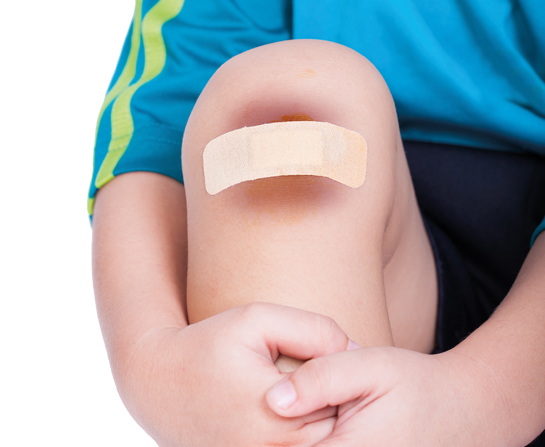“Mummy, I’m Bleeding!”
May 7, 2022 Return

For your little child, the world is full of new and joyful discoveries. Unfortunately, it is only a matter of time when he experiences his first wound.
If your child comes to you with tears, the first thing you should do is to keep your cool. Getting worked up would only terrify your child further. Here are some things you can do to help your child calm down while seeing to his wound:
- Keep calm. You may feel tempted to scold him, especially when you have been warning him so many times to stop climbing up the tree. Instead, take a deep breath and comfort him with a hug and some reassuring words.
- Wash your hands. Despite the urgency you may be feeling at that moment, take some time to wash your hands with soap and water first. This way, your hands are free from germs that may infect the wound. (Don’t forget to wash them again after treating your child’s wound!)
- For little cuts such as scrapes and abrasions, you can first rinse the wound with water to clean off any dirt or debris (be prepared for tears when you do this). You can then apply an antiseptic ointment or solution to the wound before covering it with an adhesive gauze or plaster.
- For more serious wounds such as large cuts or larcerations, especially on the face and neck, your child may need stitches. It is best to bring your child to a doctor for proper medical care.
- Throughout the whole experience, your child may continue to cry. Say comforting things such as: “Mummy is going to apply some medicine now, it will hurt a little bit, but you will be fine afterwards!” You can also promise to give him a treat after the treatment, such as ice cream, so that he has something pleasant to keep his mind on.
A word on “plasters”
Like most children, your child may be up and running again, his tears forgotten, once you have seen to his wound. Antiseptic plasters, or simply “plasters” to many of us, are a good way to keep his cuts clean from dirt and germs that may cause infection. If you have a problem keeping them on your child for more than a few minutes, try these tips:
- Paste a first aid tape over the plaster to make it “stick” better.
- Cut along the middle ofthe plaster strip’s adhesive part into two smaller strips. Wrap the lower strips as usual, but arrange the upper strips so that they cross in an “X”.
References:
About Kids’ Health. Available at www.aboutkidshealth.ca
KidsHealth. Available at www.kidshealth.org
If you like this article, do subscribe here.
